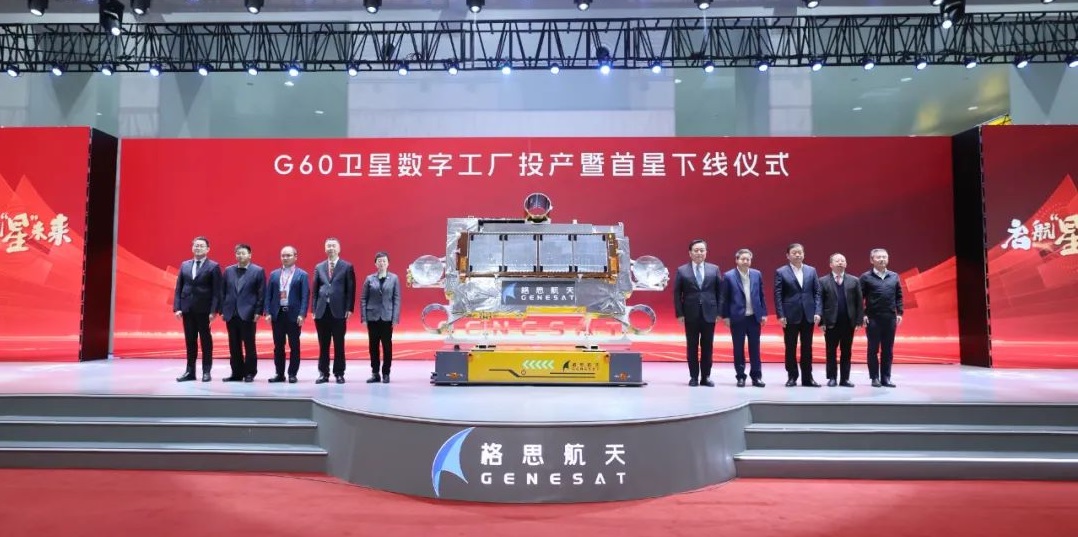First satellite for Chinese "Starlink" G60 Mega Constellation Roll off Assembly line in the Race for Global Satellite Internet Dominance

Space News ,China :- In a significant stride towards global satellite internet dominance, China has unveiled the first satellite for its ambitious G60 Starlink low Earth orbit communications megaconstellation. The breakthrough occurred at the state-of-the-art G60 digital satellite production factory in Shanghai Songjiang District on December 27, marking a pivotal moment in China pursuit of advanced space technology.
Managed by Shanghai Gesi Aerospace Technology (Genesat), a state-owned entity formed in 2022 through collaboration between the Chinese Academy of Sciences Innovation Academy for Microsatellites (IAMCAS) and Shanghai Spacecom Satellite Technology, the production facility is gearing up to launch an initial batch of 108 satellites from the G60 Starlink constellation by 2024. The long-term goal is an expansive network comprising around 12,000 satellites.
The G60 Starlink project, documented with the International Telecommunication Union (ITU) in April, outlines a strategic plan involving 36 polar orbital planes, each accommodating 36 satellites. This totals a fleet of 1,296 spacecraft, operating across the Ku, Q, and V bands. The satellites are characterized as low-cost, high-throughput, highly-reliable, low-latency, and modularized, aligning with the global trend set by competitors like SpaceX Starlink.
Integral to the broader Yangtze River Delta G60 Science and Technology Innovation Corridor, the G60 Starlink initiative aligns with Shanghai government plans to establish a flourishing commercial space ecosystem by 2025. This ecosystem encompasses satellite production, launch vehicles, applications, and infrastructure, with ambitious targets of 50 commercial rockets and 600 commercial satellites annually.
The G60 Starlink satellite manufacturing center, operational since this year, boasts a production capacity of 300 satellites annually, coupled with a promised 35% reduction in the cost of each satellite. This breakthrough technology positions China as a formidable player in the evolving landscape of global satellite communications.
China foray into megaconstellations, epitomized by the G60 Starlink project, follows the establishment of the China Satellite Network Group in 2021, overseeing the national 13,000 satellite Guowang (SatNet) project. As experimental satellite internet spacecraft are launched under Guowang in 2023, the race is on to determine which megaconstellation will take precedence in alignment with Chinese national policy.
In tandem with satellite development, China is addressing the challenge of efficiently launching vast satellite batches into orbit. Options include utilizing the Long March 5B rocket with a Yuanzheng-2 upper stage and leveraging the mass production capabilities of the expendable Long March 8. Simultaneously, new commercial launch pads on Hainan island are set to become operational in 2024, easing launch bottlenecks and streamlining access to space.
The emergence of competing communications megaconstellations signifies a potential boon for global internet connectivity, particularly in remote and underserved regions. However, the proliferation of satellite projects in low Earth orbit raises concerns about space traffic management, international coordination, collision avoidance, and the accumulation of orbital space debris. As these projects unfold, the global implications transcend technological advancements, delving into realms of economic activity, global health, national security, surveillance, and geopolitical influence. The world watches with anticipation as China cements its position in the race for enhanced satellite communication capabilities.



